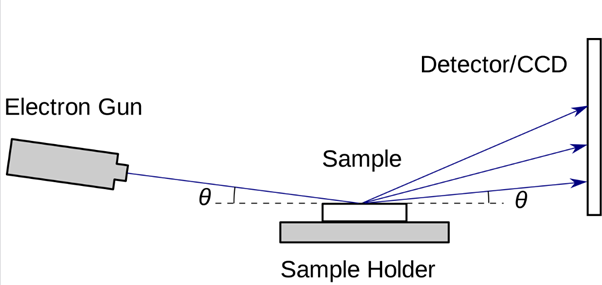RHEED is an imaging technique used in Materials Science
for studying the structure of crystals.
In RHEED, a beam of high-energy electrons is directed
at the sample surface at a low angle.
The electrons interact with the atoms in the
surface layers of the sample,
and their scattering pattern provides information about the
surface structure, including its symmetry, roughness, and atomic arrangement.

RHEED System
Problem Statement
Currently the available RHEED systems
can only analyse the structure of a crystal off-line, after the
crystal is created, due to the long processing times involved.
They do not offer real-time monitoring of the crystal
structure during the growth phase.
This limits the control possible over the crystal growth process.
Also, real-time capture and monitoring of crystal growth processes can
help illuminate the physics behind such processes.
Current Work
The solution is to have a high-speed camera focussed on the
substrate over which the crystal is grown.
A convolutional neural network will be used to
perform classification on the incoming images
to isolate the diffraction peaks and fit to a
2-D Gaussian in real-time. An FPGA based
framegrabber is utilised to interface the camera
and compute required for the neural
network. The neural network is converted into
synthesizable RTL using HLS4ML and Vivado
HLS.

Structure of the neural network
This work is done in collaboration with
Prof. Josh Agar from Drexel University and
Prof. Shi-Chieh Hsu from UW Physics.

